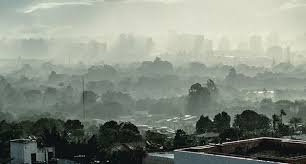Our Blog
Home / Blog
Delhi’s Air – Man Made Disaster

The air quality in Delhi, the capital territory of India, according to a WHO survey of 1,650 world cities, and a survey of 7,000 world cities by the US-based Health Effects Institute in August 2022, is the worst of any major city in the world. It also affects the districts around Delhi. Air pollution in India is estimated to kill about 2 million people every year; it is the fifth largest killer in India. India has the world’s highest death rate from chronic respiratory diseases and asthma, according to the WHO. In Delhi, poor quality air irreversibly damages the lungs of 2.2 million or 50 percent of all children.
On 25 November 2019, the Supreme Court of India made statements on the pollution in Delhi saying “Delhi has become worse than narak (hell)”. Supreme Court Justice Arun Mishra said that it is better to get explosives and kill everyone.
During the COVID-19 pandemic lockdown in India, the water quality of the Yamuna and Ganges river basins have improved as industries are closed due to the lockdown. The air quality has also significantly improved during the lockdown.
India’s Ministry of Earth Sciences published a research paper in October 2018 attributing almost 41% to vehicular emissions, 21.5% to dust and 18% to industries. The director of Centre for Science and Environment alleged that the Society of Indian Automobile Manufacturers is lobbying “against the report” because it is “inconvenient” to the automobile industry.
Air quality index of Delhi is generally in the Good (0–50), Satisfactory (51–100), and Moderate (101–200) levels between March and September, and then it drastically deteriorates to Poor (201–300), Severe (301–400), or Hazardous (401–500+) levels during October to February due to various factors including burning of effigies during Vijayadashami, bursting of firecrackers during Diwali, stubble burning, road dust, vehicle pollution and cold weather. In November 2016, in an event known as the Great Smog of Delhi, the air pollution spiked far beyond acceptable levels. Levels of PM 2.5 and PM 10 particulate matter hit 999 micrograms per cubic meter, while the 24-hour peak limits for those pollutants are 15 and 60 micrograms per cubic metre respectively. According to Bloomberg, 16.7 lakh (1,670,000) people died due to polluted air in India in the year 2019. Further, according to data released by environment ministry in 2022, the Air Quality Index of Delhi National Capital Region is over 200 for at least half the year.
Delhi’s pollution problem is also caused by the factor of animal agriculture, as smog and other harmful particles are produced by farmers burning their crops in other states since the 1980s. About 80% of agriculturally used land is used for animal agriculture, so animal agriculture can also be attributed as a factor in Delhi’s air pollution problem. Initiatives such as a 1,600km long and 5km wide The Great Green Wall of Aravalli green ecological corridor along Aravalli Range from Gujarat to Delhi which will also connect to the Sivalik Hills range is being considered with planting of 1.35 billion (135 crores) new native trees over 10 years to combat the pollution. In December 2019, IIT Bombay, in partnership with the McKelvey School of Engineering of Washington University in St. Louis, launched the Aerosol and Air Quality Research Facility to study air pollution in India.
On 15 November 2021, Delhi’s air quality saw marginal improvement as it reached the lower end of the “severe” category with AQI at 318, according to the System of Air Quality and Weather Forecasting And Research. Delhi CM, Arvind Kejriwal had announced to shut all the schools along with government offices for a week due to the severe air pollution. The AAP government told the Supreme court that they are confident and prepared for a complete lockdown. The Supreme Court asked the centre and states of the NCR region to consider remote work policies for the employees. When the air quality of Delhi on 18 November 2021 slipped to the “severe” category with the AQI at 362, the Supreme Court of India reprimanded the central and state governments asking them to take strict measures to reduce pollution in Delhi and NCR regions.
On 19 November 2021, NASA released a report on the issue of pollution in Delhi.





